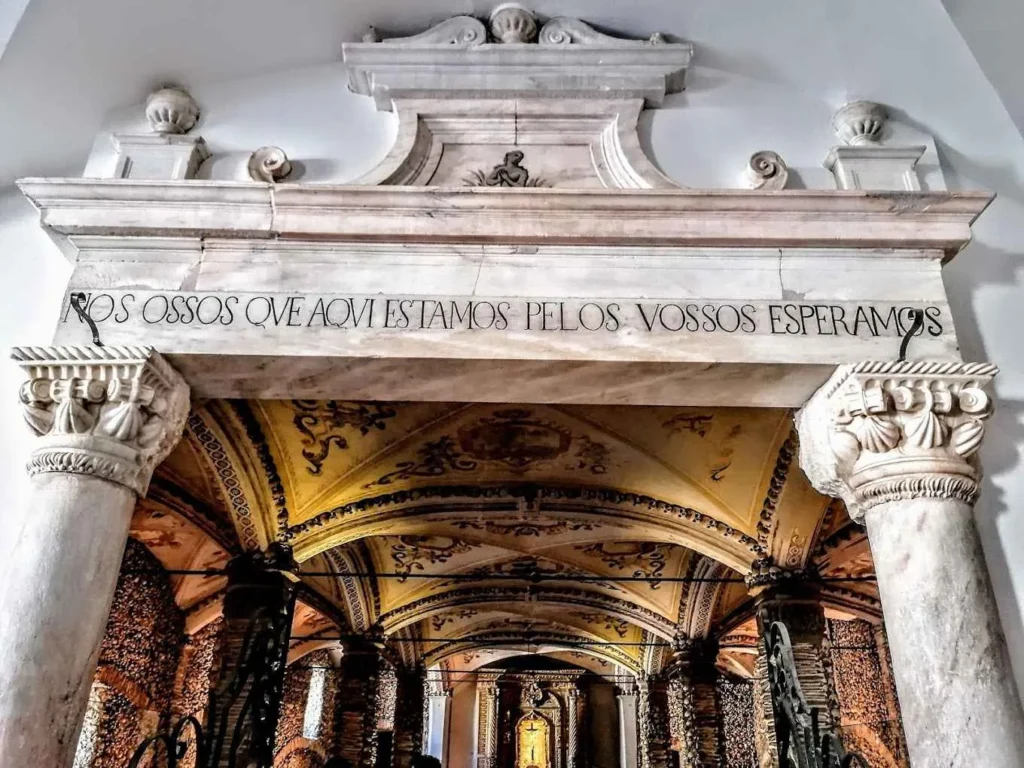The Chapel of Bones (*Capela dos Ossos*), located in Évora, Portugal, is housed within a former Franciscan dormitory. The haunting inscription above its door reads:
“We bones are here, waiting for yours.”
Inside, visitors are confronted with over 5,000 human remains, exhumed from local cemeteries in the 1650s. Originally called the “House of Disillusion,” this charnel house was designed to inspire repentance and reflection on mortality.
A Bone-Chilling Purpose
The creation of such ossuaries was not unique to Portugal. Across Europe in the 17th and 18th centuries, monks adopted a macabre yet purposeful mindset. They viewed society as consumed by vanity, wealth, and corruption, and believed reminders of mortality were essential to encourage moral living. Their solution? Elaborate bone decorations, using the remains of thousands, as stark visual lessons about life’s impermanence.
In Évora, a plaque in the chapel reads:
“Where are you going in such a hurry, traveler? Stop. Do not proceed any further. You have no greater concern than this one. Recall how many have passed from this world. Reflect on your similar end. If by chance you glance at this place, stop. For the sake of your journey, the more that you pause, the more you will progress.”
This message underscores the chapel’s purpose: to encourage visitors to contemplate mortality and live more meaningful lives.
The Hanging Mummies
Among the chapel’s most notable features are two mummies, once suspended from the ceiling and now displayed in a glass case. Hanging mummies were common in charnels like this, often serving as moralizing exhibits.
Legends about these mummies abound. One popular story suggests they were a father and son cursed by their wife and mother for mistreating her, doomed to remain unburied as a lesson for others. However, modern testing revealed the bodies are female. The original intent of their display as tools for repentance has been lost to time.
A Popular Yet Troubled Destination
Today, the Chapel of Bones is one of the most visited ossuaries in Europe and a top attraction in Évora. However, its popularity comes with challenges. Overcrowding has led to problems like graffiti, missing teeth from skulls, and even fungus growth on the bones.
These issues raise existential questions about how visitors engage with such sites. For many, the chapel becomes just another Instagram backdrop, divorced from its deeper purpose.
A Proposal for Preservation
To preserve the chapel’s sanctity, a more thoughtful approach might be necessary. Imagine a system where local visitors pay the standard €5 fee, but tourists are charged €25 and required to stay for at least an hour. The visit could include a 30-minute lecture on the chapel’s history and significance, followed by 30 minutes of quiet contemplation.
While this idea may spark debate, it emphasizes the importance of understanding and respecting the context of such unique and sacred places. After all, the chapel’s purpose was never just to display bones—it was to remind us of life’s fragility and inspire us to live with purpose.






